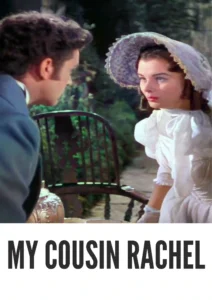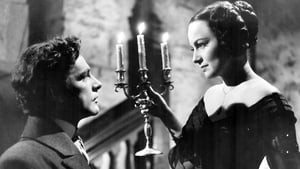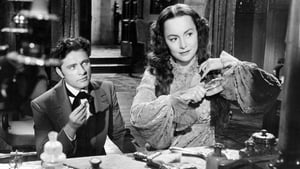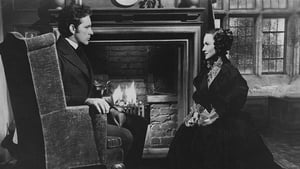Video Sources 0 Views

Synopsis

Step into a world of mystery, hidden motives, and dangerous allure with My Cousin Rachel, a gripping romantic suspense tale from 1952, now exquisitely colorized for a viewing experience that heightens every emotion. Starring Olivia de Havilland and Richard Burton, this film weaves a complex narrative of love, suspicion, and potential betrayal set against the backdrop of a haunting Cornish estate. Perfect for fans of gothic romance, suspenseful dramas, and those who appreciate stellar performances, this HD download brings a timeless story to life with vibrant clarity.
My Cousin Rachel tells the story of Philip Ashley (Richard Burton), a young orphan who is devoted to his older cousin, Ambrose. Ambrose, while wintering in Italy for his health, marries Rachel (Olivia de Havilland), a woman about whom Philip knows very little. When Ambrose dies unexpectedly, Philip becomes suspicious of Rachel, wondering if she played a role in his cousin’s death.
Consumed by suspicion and grief, Philip inherits Ambrose’s estate, but his life is further complicated when Rachel arrives in England. Despite his initial distrust, Philip finds himself drawn to Rachel’s charm and beauty. As their relationship deepens, Philip becomes increasingly torn between his suspicions and his growing affections for Rachel. The film masterfully explores themes of manipulation, jealousy, and the ambiguity of human nature, keeping the audience guessing until the very end. Is Rachel a loving widow, or a cunning manipulator? My Cousin Rachel invites viewers to decide for themselves in this classic tale of psychological suspense.
The film boasts captivating performances from its talented cast:
-
Olivia de Havilland as Rachel Ashley
-
Richard Burton as Philip Ashley
-
Audrey Dalton as Louise Kendall
-
Ronald Squire as Seecombe
-
George Dolenz as Guido Rainaldi
My Cousin Rachel masterfully blends elements of gothic romance, suspense, and psychological drama. The film’s atmospheric setting, complex characters, and intricate plot create a sense of unease and anticipation, making it a standout in the realm of romantic suspense. Its exploration of dark secrets and hidden motives keeps viewers on the edge of their seats.
Released in 1952, My Cousin Rachel arrived during a period of great storytelling in cinema. The film reflects the era’s fascination with complex character studies and suspenseful narratives. Based on the novel by Daphne du Maurier, the film resonated with audiences seeking sophisticated and emotionally charged stories. My Cousin Rachel stands as a testament to the enduring power of classic Hollywood storytelling.
This colorized version of My Cousin Rachel has been carefully restored using modern digital techniques, enhancing the visual impact of the film while preserving its original atmosphere of mystery and intrigue. The colorization process involved meticulous analysis of the original black and white footage, adding depth and richness to the characters and settings. The end result is a visually stunning presentation that offers a fresh perspective on this classic film, allowing audiences to fully immerse themselves in its haunting beauty.
The movie is also known under the following titles:
-
Mein Vetter Rachel (West Germany)
-
La mia cugina Rachele (Italy)
-
Prima mea vară, Rachel (Romania)
-
: Henry Koster
-
: Nunnally Johnson, based on the novel by Daphne du Maurier
-
: Joseph LaShelle
-
: James B. Clark
-
: Franz Waxman
-
: Twentieth Century Fox
-
: 20th Century Fox
-
: 98 minutes
-
: MP4
-
: HD (1080p)
-
: Compatible with a wide range of devices, including smartphones, tablets, computers, and smart TVs.
My Cousin Rachel (1952) garnered critical acclaim for its performances, direction, and faithful adaptation of Daphne du Maurier’s novel. Olivia de Havilland’s portrayal of Rachel was particularly praised, earning her an Academy Award nomination. The film is considered a classic example of gothic romance, appreciated for its atmospheric storytelling and psychological depth.
-
: What is My Cousin Rachel about?
-
A: My Cousin Rachel is a romantic suspense story about a young man who becomes suspicious of his cousin’s widow, only to find himself falling under her spell.
-
-
: Is My Cousin Rachel (1952) based on a book?
-
A: Yes, the film is based on the novel of the same name by Daphne du Maurier.
-
-
: Is this version of My Cousin Rachel colorized?
-
A: Yes, this version has been professionally colorized to enhance the viewing experience.
-
-
: What makes My Cousin Rachel a classic?
-
A: My Cousin Rachel is considered a classic for its compelling story, strong performances, and atmospheric direction.
-
-
: What is the download format?
-
A: The download format is MP4, which is compatible with most devices.
-
-
: What resolution is the download?
-
A: The resolution is HD (1080p), providing a high-quality viewing experience.
-
Watch My Cousin Rachel Today!













